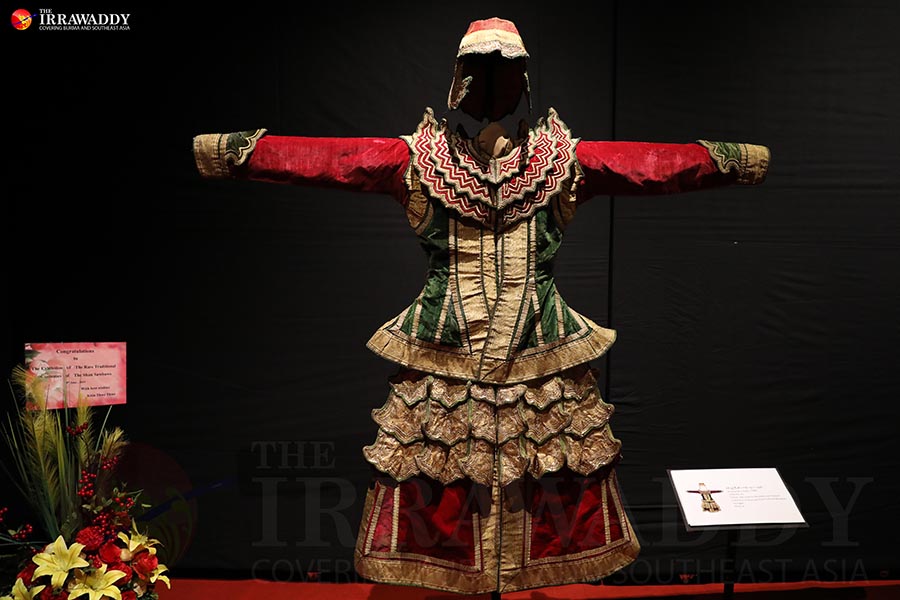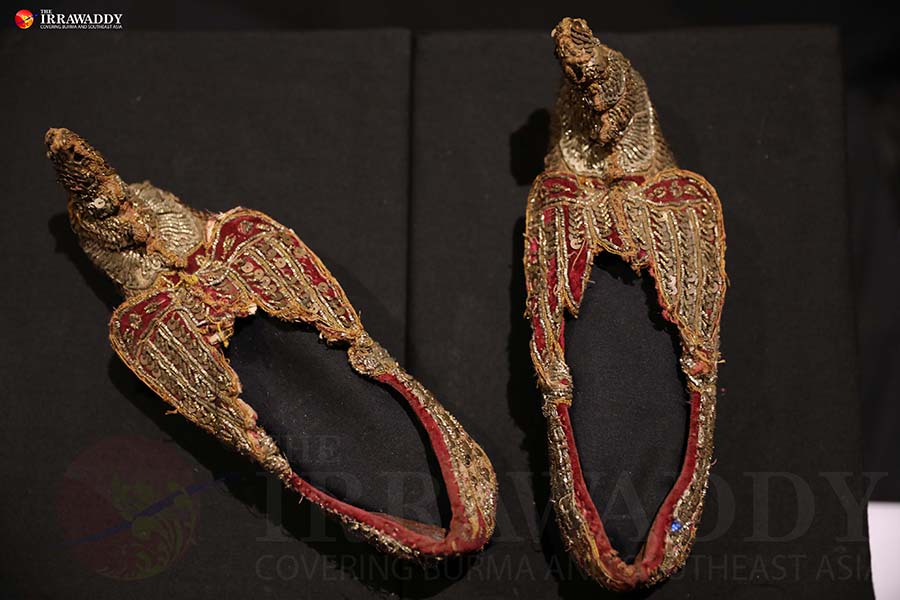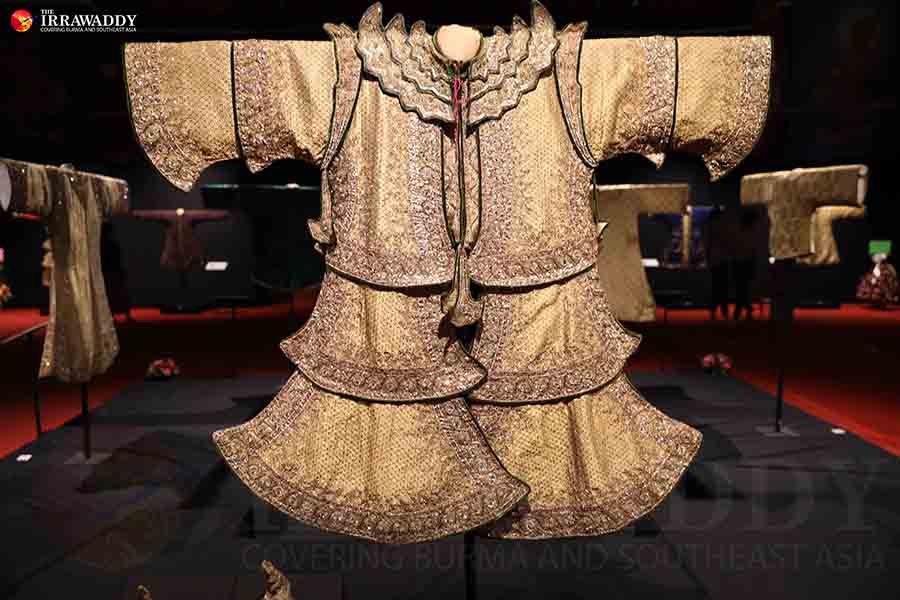For the very first time, a textile conservation event is exhibiting 30 rare royal costumes of the Shan Sawbwas that are over a century old at the National Museum. The show’s aim is to display the fashion history and the culture of the Shan ethnic group to the public.
“We wanted to let the people know that the conservation department at the National Museum is working on these kind of conservation projects,” said U Kyaw Shin Naung, a conservator and assistant director of the National Museum.
Rare costumes belonging to Nyaung Shwe Sawbwa Sar Sao Maung, Sao Shwe Thike and Shan Princess Mahardevi Sao Nan Yar are being shown at the exhibition along with others belonging to Shan princes, ministers, chiefs and senior officers.
“Many of these rare costumes are those that Shan Sawbwas used to wear in coronation ceremonies, not in daily life. All of the costumes are wonderful,” said Ko Ye Thway Aung, a creative director of Scott and Co., a local tailoring shop.

He visited the exhibition on the opening day on June 9. “It’s an impressive exhibit. The conservation process was done systematically and the conservators did their best—it’s really impressive,” he said.
He learned about the great clothing history of the Shan, what kind of materials they used and their creative standards from the era.
“The most interesting thing is they used the best quality textiles and materials. Most of them could not be found locally. Some textiles needed to be ordered from England. I was so curious about the costumes and was able to get a closer look—that’s how I got to know that fact,” he said.
At the exhibition, not only royal costumes but also other items such as shoes, gaung baung (headdresses), khar see kyoe (cloth belts) and others are on display.

“The standards of costumes are totally different from nowadays; it shows the great history of the Shan ethnic group that we can’t see today. We [Myanmar] people had a royal era, just as other countries have great historical periods. So, if we compare it with other countries, it’s a proud feeling,” he said.
He added that, “I got to see the great history of the Shan in person; that’s rare to see in this era.”
The conservation process took a total of 15 months and was completed in 2018.
“The costumes, which are over 100 years old, took over a month to restore because the fabrics were really damaged; we needed to be careful,” U Kyaw Shin Naung said.

He added that, “The most difficult thing in this conservation process is some textiles and fabrics can’t be found locally. So, we need to order from abroad. Then, we have to wait a long time.”
The garments are made of such materials as tapestry, textiles, silk, brocade, cotton, stained textiles, metals and precious stones.
The team restored a total of 138 costumes, which were sent from the Nyaung Shwe Cultural Museum in 2017. The 30 costumes on display are the last ones to be sent back.
“Before we send them back to the Nyaung Shwe Cultural Museum, people who are interested in history and fashion design should see these costumes, we think. That’s why we requested the Ministry of Religious Affairs and Culture to create this exhibition,” he said.

“In Myanmar, it’s difficult to find the old historical costumes.… So, sometimes designers make mistakes when they create traditionally inspired dress. This kind of exhibition is indeed needed and it’s a must see. Especially for people who make clothes,” Ko Ye Thway Aung said.
He added that, “If there is a chance to see other ethnic groups’ historic clothing or costumes, I will definitely go, and I hope to see more of this kind of exhibition.”
After six days of the exhibition, about 2,000 visitors had attended, both locals and foreigners. The exhibition is the best-attended the National Museum has put on, said U Kyaw Shin Naung.
“The feedback has been mostly positive and many people have visited the exhibition, averaging 300 people per day. Some days we have a total of 500 and people ask for more exhibitions like this. We are happy to hear that,” said U Kyaw Shin Naung.
He added, “We have plans to organize exhibitions of the costumes of the other ethnic groups. So, please don’t hesitate to request this if your ethnic group has a great collection.”
The exhibition is organized by the Ministry of Religious Affairs and Culture and the Shan State government. It will be open until June 18. The museum is open from 9:30 am to 4:30pm. The exhibition is free.
You may also like these stories:
Life Restored to a Heritage Landmark in Yangon
Documenting Contemporary Art in an Era of Cultural Evolution
Fostering Pride in the Art of Chin Textile Weaving
Art Exhibition Questions a Gender Discriminatory Status Quo

















